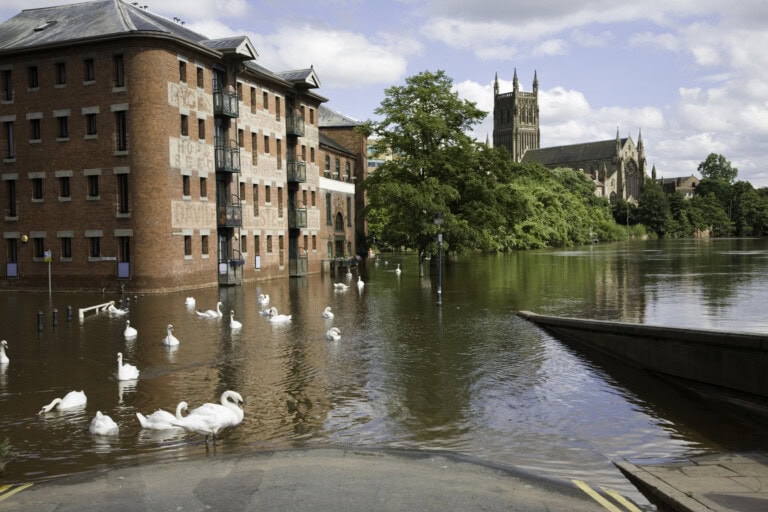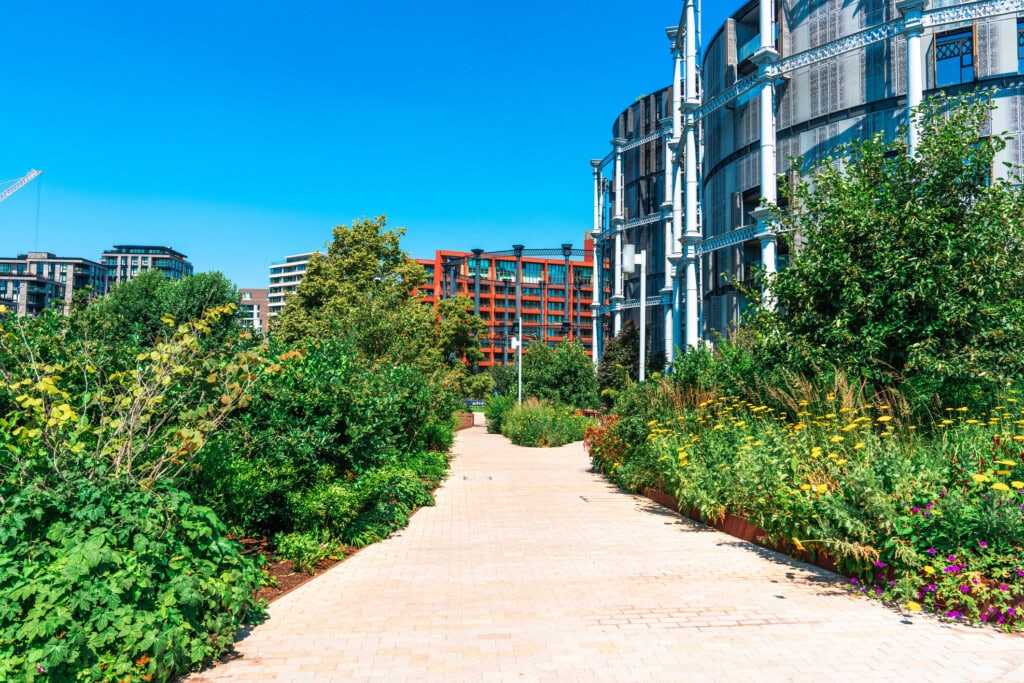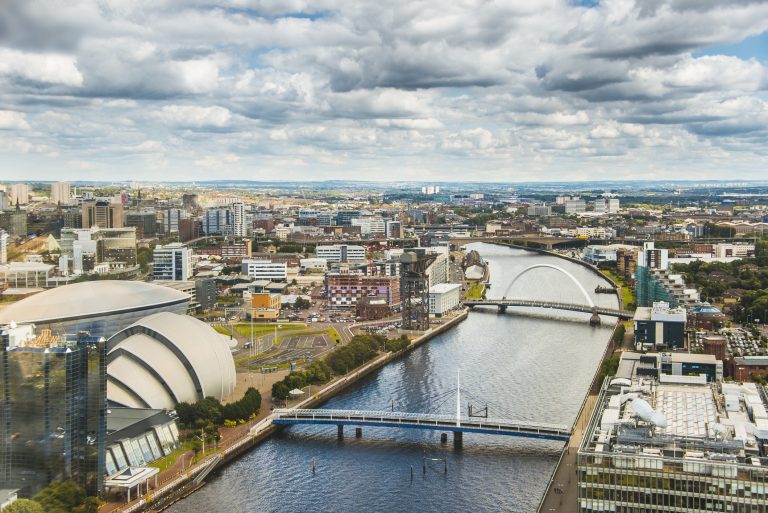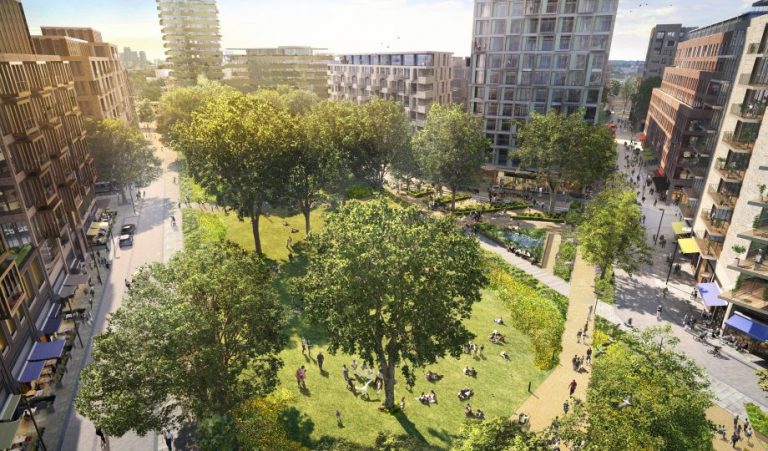How do you create a Flood Resilient City?

What is a Flood Resilient City?
A flood resilient city is one that is prepared to manage both normal and unusual flooding events – whether that’s from excess rainfall or storm surge. Ideally, its infrastructure, buildings, and day-to-day activities should be able to navigate these impacts with limited negative effect on its community members. These cities will have resilience to flood events as a key priority when thinking of both urban planning and building policy, to ensure that all new developments are in keeping with the flood resilient ethos.
When considered in its wider context, a flood resilient city is a key idea for anyone wanting to understand how the UK can adapt and become more resilient to our changing and increasingly volatile climate.
Learn more about Climate Change Adaptation here.

Is Flood Risk increasing in UK towns and cities?
Yes, the Environment Agency predicts that 1 in 4 homes in the UK will be at risk of flooding by 2050. As the climate warms, clouds can hold more moisture and rain events will get more intense. the Met Office predicts that with every °C of warming, regional intensity of rainfall could increase by 5 – 15%. With more intense storms, surface water flooding risk increases. Surface water flooding is when the amount of rain exceeds the capacity of drains and sewers – and is the UK’s highest area of flood risk with London being the hardest hit. The UK is also at an increasing risk of river and sea flooding – which occurs when rivers break their banks or storm surges cause coastal flooding. This type of flooding can be more dangerous, as flood waters tend to be deeper, and the East Midlands, Yorkshire and The Humber, and south-east England are most at risk.
As flooding likelihood and severity rises, it becomes increasingly important for towns and cities across the country to prioritise managing flood risk
How can we build a Flood Proof City?
Reduce Impermeable Surfaces

One of the biggest contributors to surface flooding in our cities is urbanisation, and all of the concrete, asphalt and paving in our infrastructure and buildings. These surfaces, unlike the bare earth, don’t absorb water but instead repel it. This means that water cannot easily drain away, and all rain that does fall must enter the sewage system – which can lead to the drains getting easily overwhelmed and flooding occurring.
To fix this problem, a flood resilient city should invest in permeable paving solutions, that keep pavements navigable whilst also allowing rain to drain through to the groundwater. They can come in a variety of styles, from porous asphalt to higher-tech block paving or traditional grass pavers.
Bring Nature into Cities

Much like permeable paving, bringing nature into cities reduces the amount of surface run off, and increases the water that can be absorbed by the earth. This can be as simple as having a grass area instead of paving, or planting more street trees. However, technologies have also been developed with the relationship between urban nature and flood resilience at their core
The most well-known examples are Sustainable Drainage Systems (or SuDS), which usually centre around rain gardens, ponds and wetland areas that mimic natural water management systems. They aim to hold the water in place, so that it can drain away slowly and reduce not only surface water, but also pressure on drainage systems and the groundwater. In early 2023, these became manadatory for new developments in the UK, and are being introduced in cities across the country. their implementation helps manage flood waters and can filter contaminants from run off, whilst also creating opportunities to bring native plants back into our communities.
Another option, particularly useful in highly developed areas, are green roofs. Usually made up of native plants, and installed on flat or slightly sloping eaves, green roofs work similarly to SuDs, slowing down rainwater, and reducing the pressure on drainage systems. In addition to improving flood resilience, green roofs offer a number of benefits such as insulating the building, boosting air quality and introducing more biodiversity into built up areas.
Learn more about Nature Based Solutions and how they can improve our cities here.
Make smart changes to buildings
If a building is in a flood risk zone, it should be prepared for flooding impacts. This can look drastic, such as raising a home onto stilts or adapting a building’s layout, so the least vulnerable uses are on the ground floor (for example, car parking). However, this can also be much less intrusive. For example, homeowners can install flood proof gates that block or slow the flow of water should there be a mild flooding event.
Explore solutions that can help us manage flood risk here.

Embrace more resilient rivers and coastlines
To specifically combat river or sea flooding, we need to rethink what the nation’s rivers and coastlines look like. Historically in the UK we have a very managed environment, with rivers having little space to ebb and flow, or flood, like they naturally are designed to. Sometimes, management of rivers or the sea is needed – for example through a dense urban centre or at a port. However, engineered solutions such as sea walls and dams do not easily adapt to our changing climate, and, for example, what that might mean for the maximum height of a stream. This can lead to increased flooding in our communities as floodwaters have nowhere else to go.
Therefore, to complement these ‘hard’ solutions, we should invest in natural solutions outside of our cities. This can look like restoring marshlands on our coast to reduce the impact of rising seas, or allowing the ‘rewiggiling’ of our rivers upstream to slow the flow of water run off – perhaps with the introduction of beavers. Projects like this are often outside of the scope of individual towns, but it’s important to remember that improving the flood resilience of our cities, will inevitably ask us to improve the flood resilience of our entire environment.
What is UKGBC doing about this issue?
UKGBC has been working on climate change adaptation, and therefore flood management in our cities, for many years. Crucially, we are currently adapting a Climate Resilience Roadmap that will be a collaborative effort between some of the built environment’s most influential, trusted, and experienced players using cutting-edge insights at the forefront of global industry. This Roadmap will offer a clear pathway, and easy to understand metrics, that allow for the industry players and policymakers to shape the flood resilient cities of the future.
Learn more about the Climate Resilience Roadmap here.
Related
Unveiling the Climate Risks: Voices from UK’s Built Environment

UKGBC Members visit Coal House in Cardiff

UKGBC urges action on Scotland’s building decarbonisation amid political delays

UKGBC responds to the government’s Spring Budget 2025


